The DROID brand deserves the majority of credit for the amount of early success that the Android operating system had in 2009 and 2010. From the original Motorola DROID to the original DROID Incredible, this was the brand of phones that people flocked to if they wanted a phone outside of the iPhone, not just because of a great marketing campaign, but because these were top of the line phones. Ask most of the readers on this site which phone got them started on Android, and you shouldn’t be surprised to hear them say, “The OG DROID.” It’s an iconic phone that helped launch Android to the top.
But as the years have flown by, the DROID brand’s popularity has diminished, largely due to the Samsung Galaxy takeover and other competitors focusing on releasing a single flagship phone across all carriers. DROID has always been there, but it doesn’t seem to have been given the attention it had in early years. The DROID brand, since 2011, has become watered down, stale, and if I’m being honest, kind of annoying, leaving it with little influence.
And then came the DROID Turbo, a device that beats almost every other phone spec-for-spec, has ditched the red robotic eye and obnoxious “Drooooooooooid!” sounds, and doesn’t look like the Terminator designed it. It’s still a bit flashy depending on the color you choose, but it feels durable, can probably take a bullet, and is a serious competitor in a crowded space. It also might be the DROID phone you have been looking for, after all these years.
This is our DROID Turbo review.
The Good
Specs
For spec junkies, it doesn’t get much more high-end than the DROID Turbo. You also aren’t going to find many phones as “future proof” as this one. You can run down the list of Turbo specs and struggle to find a weak spot. In fact, I would argue that this phone (at least on paper) has no weak spots. We are looking at a 5.2-inch QHD display (2560×1440, 565ppi), 2.7GHz Qualcomm Snapdragon 805 processor, 3GB RAM, 32GB or 64GB of storage, 3,900mAh battery, 21MP rear camera, wireless charging, 802.11ac WiFi, Bluetooth 4.0, water repellency, and support for a number of LTE bands and network frequencies/types. Some will strongly believe that its missing SD card slot is a big deal, but for most, the rest of that list I just ran through completely outweighs not having expandable storage.
The DROID Turbo is one of those phones that you can buy today, knowing that it will still be a beast in a couple of years. We talk a lot about buying the right phone, one that will last you through a 2-year contract – I don’t see any reason why this phone won’t still be crushing MBs and pixels and geebeez by the time Verizon is ready to let you upgrade again. Hell, you may not even want to upgrade to something different.
Display
Smartphone displays are getting so good these days. As we have gone from qHD to HD to FHD to QHD, we keep expecting battery life to suffer as resolution increases, color accuracy to decline, viewing angles to worsen, and the overall experience to not match the best from the last great panel. While the LG G3’s QHD panel was clearly a first-of-its-kind-so-it-kind-of-sucks product, the other QHD displays to come out in the past month or so are phenomenal. The DROID Turbo’s is one of them.
While the DROID Turbo uses an AMOLED display, by no means does it display the insanely overly saturated colors that are often associated with an AMOLED panel. Sure, the colors pop and there is a bit of added contrast, but this is nothing like the AMOLED panels of the past. Take a look at the four below, all of which are AMOLEDs. The QHD panels (Nexus 6, Turbo, and Note 4) below are all cool and pleasing to the eye, whereas the FHD panel in the Moto X is slightly warm (pinkish) and a little more saturated. The blues and pinks are certainly pronounced from the Droid Life page they are showing, but not in an offensive way.
The DROID Turbo’s panel has excellent viewing angles, looks great when flipping through the 21MP photos it takes, and might be one of the best displays you look at.
It doesn’t quite float to the top of its glass like we have seen on the new Moto X or the iPhone 6, but it’s still good. The only reason I mentioned that is because there is nothing better than a panel that appears to float as close to the top of the glass as possible, as it allows you to feel like you are really touching and swiping and pressing with every screen touch. The Turbo is still plenty responsive, it’s just not as immersive as an experience as others.
Finally, for those wondering, the AMOLED in the Turbo appears to use the diamond pixel arrangement we have seen used over the last couple of years. Samsung originally brought out this arrangement in the Galaxy S4, and hasn’t backed away from it. I have no problem with it at this point, even if one could consider it to be “PenTile.” The displays are so pixel dense, accurate, and battery-friendly these days, that you would be foolish to criticize this pixel arrangement.
Macros for fun.
Battery Life
The 3,900mAh battery in the DROID Turbo is said to last up to 48 hours, at least according to Motorola. Does it? Well, no. No phone ever lasts up to the specs that manufacturers tell us, but does it come close? I’ll just say this – the DROID Turbo will last you more than a single day with ease. But, it’s the second day that you will likely have to worry about, depending on your usage.
In my testing, I was able to cruise through an entire day, skip plugging the phone in at night, wake up the next morning, and still enjoy another five or six hours of use before I felt like I should plug it in. That’s pretty great battery life, when you compare it to the new Moto X, LG G3, Galaxy S5 or HTC One (M8). It bests them all. But then again, it should because it has almost double the battery capacity of some of those phones.
I had initially thought about leaving this Battery Life category out of “The Good” section because I expected more like 36-40 hours of use without needing a charger, but that’s just not fair. The battery life on this phone is better than almost any other phone on the market, outside of maybe the OnePlus One. If that’s due in part to its massive 3,900mAh juice box, so be it. Good on Motorola for keeping a device this slim while packing in a battery this large.
And keep in mind that the phone comes with a Motorola Turbo Charger in the box, so you can rapid charge the battery on day two in no time at all.
Performance
There are no better performing Android phones on the market right now than the phones that Motorola is producing. By going with a “pure” Android experience and adding onto that experience with specific software features, phones like the DROID Turbo almost never stutter. And that’s with a 5.2-inch QHD display at the forefront of it all.
All you need to do is pick up three Android phones at a time, making sure one is from Motorola, open their keyboards, and start typing a few words. The Motorola phone will undoubtedly feel dramatically more responsive. When you type – it types. When you swipe between a screen – it moves. When you open the app switcher – it opens immediately. We talk a lot about “jank” with phones that use overly done skins on top of Android, but you probably noticed that the word “jank” is never mentioned next to the current crop of Motorola phones.
The DROID Turbo is no different than the new Moto X or last year’s Moto/DROID line-up. The phone flies. And thanks to its 2.7GHz quad-core Snapdragon 805 processor and 3GB RAM, it should never stop flying.
The only time you will see the Turbo hiccup, is in the camera when snapping pictures. For whatever reason, just after you press the screen to snap a photo, there is a slight pause. I talked about this more in the camera section below, but we are hopeful that Motorola can fix this with a software update.
Design
The DROID Turbo, at least to me, is the least offensive looking DROID in years. Gone is the KEVLAR, and in are new materials that should offer equal toughness without the cheese. Metallized Glass Fiber and Ballistic Nylon grace the back of the Turbo, taking it from cheap robot killer, to some sort of advanced new-school weaponry seen only in movies. It’s semi bulky, but that’s due to the massive 3,900mAh battery inside. The bulk actually allows for the device to have a nice curve to its back that feels great in hand. All models are masculine, though, with angles and edges that aim to define the phone as something other than what you have seen from any other manufacturer this year. You definitely know that this is a DROID, but unlike in years past, this phone doesn’t make me want to keep it tucked away in a pocket.
The Metallized Glass Fiber models all have a subtle shine with 3D-effect to their backs, yet they feel soft to the touch. The red version really makes a statement, though I’m not sure it’s exactly the statement you want to make every day. It’s pretty (in a way), don’t get me wrong, I’m just not sure you will think it’s that pretty for the next two years. The two Metallized Fiber versions have single-piece backsides without seams that certainly look a bit sleeker than the Ballistic Nylon version. They also weigh in slightly slimmer.
I have been testing the Ballistic Nylon model (which also comes as a 64GB special edition for an extra $50) and love the way it looks. If you are buying the Turbo and want a sleek-yet-rugged killer, go Ballistic Nylon. Just look at the macro shot of the the nylon weave above and tell me you aren’t saying, “Damn that’s cool,” right now. Beyond cool close-ups, this version is so understated, until you get into the details. Motorola had to add an extra bit of casing to lock in that weave (at least I’m assuming so), so you don’t get the single-piece back side, but that’s OK. There is a texture and elegance to this version that I really appreciate. It’s understated in color, yet you always know that you are holding it thanks to the weave. It’s grippy, but not too grippy. And like I said previously, it’s masculine without the cheese.
Also, the Ballistic Nylon model reminds me of Batman (Christopher Nolan’s version). And that, is awesome. How many other phones bring out visions of the Dark Knight?
In terms of overall size, the phone is big, but not Note 4 or Nexus 6 big. It’s 5.2-inch QHD display and 3,900mAh battery certainly make for a thicker phone, but overall, it’s not much taller or wider than the new Moto X, which is one of the better designed phones of 2014.
If there are faults in the design, it would be with the choice by the Turbo team to go with capacitive navigation buttons over on-screen. Had they gone on-screen, the overall footprint of the phone would have been shrunken, possibly giving this the best in-hand feel of almost any device out there. Capacitive buttons also make things like the swipe gesture from home to the screen to access Google Now quite frustrating (it works, just not very well). But then again, they also allow you to utilize every pixel of that 2560×1440 display, without having to worry about on-screen buttons showing and hiding.
I also don’t know what’s up with the flattened nose look on the bottom back side of the device, down by the USB port, but hey, I am just nitpicking at this point.
To see all of the colors in the wild, be sure to check out our original DROID Turbo gallery from the launch event.
Price
The last two years, Verizon and Motorola put out MAXX versions of the new flagship DROID, both of which carried an arguably high price tag of $299 on contract. So when sources of ours told us a couple of weeks before the Turbo launch that we would be looking at a $199 price (32GB version), with all of its high-end specs and a big 3,900mAh battery, we had a hard time believing it. And then it happened. While it’s tough to call a $200 phone “cheap” or a “steal,” it sort of feels that way with the Turbo, knowing that Motorola did everything in their power to create the ultimate DROID phone. Plus, if you don’t want to sign a contract, you are looking at $599. If you buy the Nexus 6 or Galaxy Note 4 without a contract, two similarly spec’d phones, you are looking at prices of $649 and $699, respectively.
The Ballistic Nylon also comes with an optional 64GB of storage, which jumps the price to $249 on-contract.
Software
I typically try to write every single word from scratch when doing a review, but my thoughts on this section match up exactly to what I wrote in the Moto X (2014) review. They run the same “pure” Android software, have the same access to the Moto suite of apps (Voice, Display, Actions, and Assist), and should see software updates before most other devices. So, I’m copying and pasting this section from that review (and tweaking it to fit better). If that offends you, then I apologize. But look, we have other devices to get to, even if the Turbo is mostly awesome.
Moto Voice has been given so many new features that I’m not sure I can list them all. First, it will now let you customize its launch phrase. “OK, Google Now” is out, in is almost anything you can think of. Mine has changed every couple of days, but currently, in order to interact with my phone, I simply say, “Talk to me Turbo.” From there, a whole bunch of new commands are at my disposal, from being able to post to Facebook to taking a selfie to saying “Goodnight” to put your phone into sleep mode. You can ask for your data usage, ask “What’s up?” to hear your current notification situation, or pull up the YouTube app and your favorite artist. With the first Moto X or DROID Maxx, I didn’t use Touchless Control all that much, but with this new version, I find myself using Moto Voice several times per day.
Moto Display is still without a doubt my favorite software feature on any phone, ever. Getting rid of the useless notification light in favor of lighting up a minimal amount of pixels on your display to show you real information has been an incredible game changer. This time around, Motorola improved Moto Display by allowing you to interact with up to three notifications at once instead of just one. You can swipe into individual apps or swipe to the left or right to quiet the screen again, plus you have more control over what’s displayed this year as well.
Moto Assist hasn’t improved all that much in terms of new features, but you will find new settings in Driving and Meeting modes. As someone who works out of a home office, I don’t find all that many uses for Assist outside of the Sleeping function, but I could see how this could be a powerful tool for those on the go or in and out of meetings. For those new to Assist, think of it as an automated service that changes settings on your phone depending on if you are driving, sleeping, in a meeting, or at home. It can talk to you or play music if it senses you are driving, turn off all interruptions when in a meeting, or completely silence your phone when it knows you are sleeping. This is all done automatically, by the way.
Moto Actions are the new option to the group and use the new infrared sensors housed in the front of the display. With Moto Actions you can wave over the top of your phone during an incoming call to silence it and also watch as Moto Display lights up when your hand approaches the device. This doesn’t work as good on the Turbo as it does on the Moto X, because it requires you to wave your hand over the top of the device. It seems to be missing the extra IR sensors towards the phone’s chin. Last year’s Quick Capture twisting motion is technically a part of Moto Actions as well.
Software Updates should come often and quick if last year’s Motorola line-up is anything to go by. Motorola was one of the fastest in the industry to update to the latest versions of Android throughout last year, something we doubt will change in 2014. Don’t be surprised that when Android 5.0 “Lollipop” goes public, if Motorola is ready to update the DROID Turbo within a couple of weeks. Also, all of the Moto suite of apps that we just talked about have been added/updated on Google Play and will only continue to get better throughout the Moto X’s life.
If there is one move I don’t fully understand, it’s the launcher situation on the Turbo. The new Moto X uses the Google Now Launcher, so it has quicker access to Google Now when on the home screen, plus it updates as Google updates it through Google Play. With the Turbo, Motorola ditched the GNL and went with something called Launcher 3. It looks like the stock Google Now Launcher, but it doesn’t have the left panel access to Google Now and it certainly won’t be updated through Google Play. It’s an odd move, but then again, this is Android, so you can install whatever launcher you want anyway.
Somewhere-in-the-Middle
Camera
The 21MP camera in the DROID Turbo is (currently) a big pile of meh. It is capable of taking some nice photos, I think. Well, yes, I know that it can because there are a couple of them below. It’s just that you never know if you have captured one until it’s probably too late. I don’t know why there is this nasty shutter stutter shortly after you tap the screen to take a picture on the Turbo, but it’s there and it is extremely frustrating. And I know this isn’t just an issue with my review unit, because it was there in every demo unit I tested at the phone’s launch event as well, which I noted during my unboxing video below. I’m hopeful that Motorola can address this in a software update, because until then, your photos are going to be more miss than hit. And because of that potentially software-saving-thought, this category sits out of the “Not-so-Good” section.
If we look at the Turbo’s software, you find a positive spot, and that’s because it is the same software experience you find on the Moto X (2nd gen), along with last year’s line-up of phones from Motorola. It is super simple, at times to a fault, but usually is the experience I prefer when snapping photos from a smartphone. I don’t want to mess with settings or search for shutter buttons, I just want to snap quick and quality photos. That’s what the Turbo’s software attempts to allow you to do, with its ultra-minimal control setup (accessed via swipe from the left) and tap-to-shoot capturing.
But if we get back to the problems here, it comes back to a terrifyingly constant stutter as the phone attempts to snap photos. Every single time you tap the screen to take a photo, the camera app halts, appears to freeze, and then finishes. The problem here is that the object you were shooting a picture of has likely moved and the moment you were attempting to capture is gone. Also, while walking around New York and Portland, I don’t know how many times I thought I was taking a picture of a building but later could only find pictures of my foot. How, you ask? Because I thought the phone was done shooting a photo of a big beautiful building, when in fact it was pausing as I lowered the phone, only to settle on shooting a picture of the ground. Seriously, this happened at least three times to me.
In the samples below, you can see in some of the cityscapes that the phone is quite capable. Even in extreme low light (the beer picture, which was in a bar so dark I was using my phone as a flashlight to see the menu) or when shooting macros (bokeh!), I was surprised to see solid results. Just remember that you better keep incredibly still as you are always at the mercy of that damn stutter in the shutter. Word to your mutter.
Full resolution: 1 | 2 | 3 | 4 | 5 | 6 | 7
No Simultaneous Voice and Data (for now)
As of right now, just like the new Moto X on Verizon, the Turbo can’t do simultaneous voice and data. In other words, you can’t be on a phone call and still access the internet or apps or email. The only way you can currently place a call and still have a data connection to get things done in the background, is if you have a WiFi connection. This is a pretty crappy situation, because many of us are on the go, place calls, and still need access to a data connection while on the phone, yet are no where near WiFi.
Verizon has said that the phone will receive an update before the end of the year to enable this functionality, but this year still has two full months left. The update will bring Advanced Calling 1.0, which is Verizon’s version of Voice-over-LTE (VoLTE). Once the phone has VoLTE, everything will be fixed, you just have to decide if you can go two months without it.
The Not-so-Good
Availability
As previously mentioned, I think the price of the DROID Turbo is actually quite good for the amount of next-gen tech that Motorola has packed into it. Unfortunately, all of that tech in this well-priced phone is only available to customers of Verizon Wireless. And look, that’s not surprising since they have an exclusive on the DROID brand, but it’s too bad that interested parties not subscribed to Verizon’s services have no chance at using this phone. It will work here and there on AT&T or T-Mobile, since the Turbo is essentially an unlocked GSM phone, but it may not be that reliable. If you can’t tell from reading up to this point, we really like the DROID Turbo, it’s simply unfortunate that most of you won’t be able to enjoy it.
If you are on Verizon and considering this as your next phone, you are in luck, as the phone is already available in three color schemes (Metallic Red, Metallic Black, and Ballistic Nylon) that all look great. The Metallized Red and Black models come with 32GB of storage, but you can double that storage to 64GB with the Ballistic Nylon variant.
Other Notes
- T-Mobile: As you may have noticed in some of my screenshots, I am currently running the Turbo on T-Mobile’s network and getting 4G LTE. The Turbo supports band 4 LTE, so if you live in a city that has solid T-Mobile LTE coverage, you could potentially use the phone there. It should work on AT&T as well, but it doesn’t support AT&T’s band 17 LTE, only band 4.
- Wireless Charging: The DROID Turbo has wireless charging built-in, which is typically an awesome bonus. However, since it has a Turbo Charger in the box, I rarely used the wireless charging aspect. Turbo Charging is the future.
- Speaker: The Turbo has a single speaker that doubles as the earpiece speaker. It’s decently loud, but I often hear crackling when the volume is cranked and notifications come in. This is no BoomSound.
Video
Unboxing
[responsive_vid vid_url=”A0R_mGplGzo”]
vs. DROID Maxx and Moto X (2nd gen)
[responsive_vid vid_url=”sKxtEWVAxHM”]
Gallery
To see images of the other two colors, check out our DROID Turbo gallery.
The Verdict
The DROID Turbo is a beast of a phone that has nothing but top tier specs at a surprisingly reasonable price. There are few phones that match this new Motorola smartphone on paper and in real world use. While the camera needs a software update soon to improve its speed and consistency, there are few things wrong with the Turbo. It feels premium, looks better than previous DROID phones, has excellent battery life, and performs flawlessly. If you are a Verizon customer, this should be a phone on your short list. If you aren’t on Verizon, well, sorry.

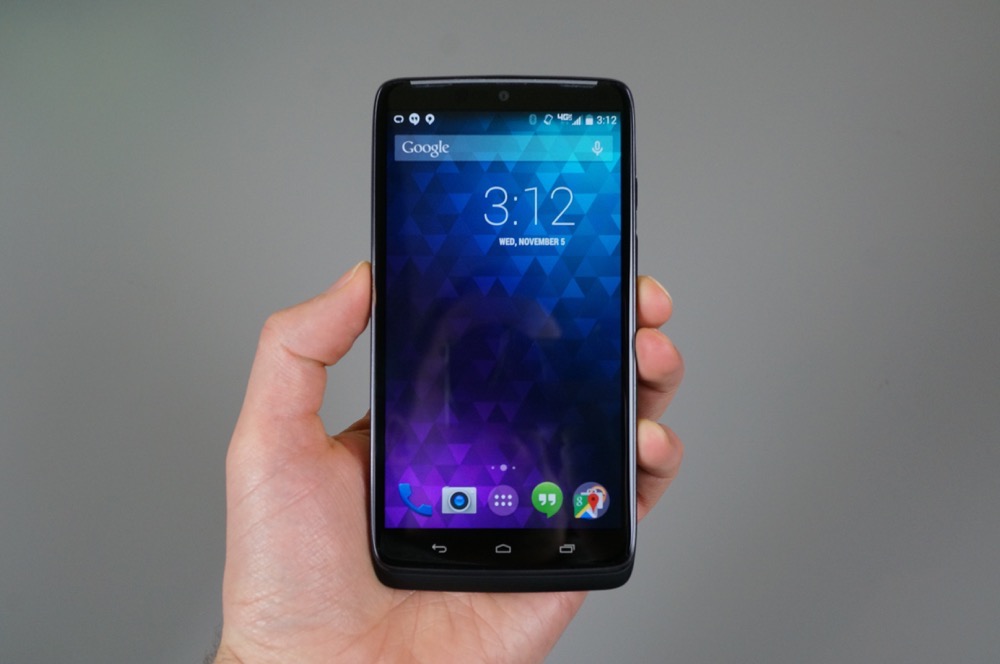
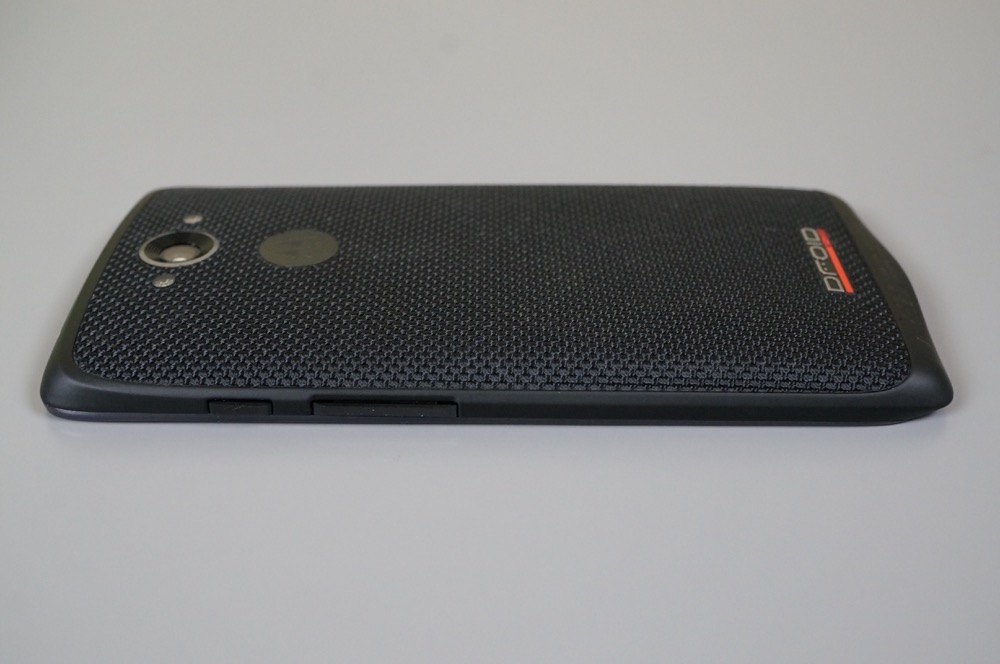
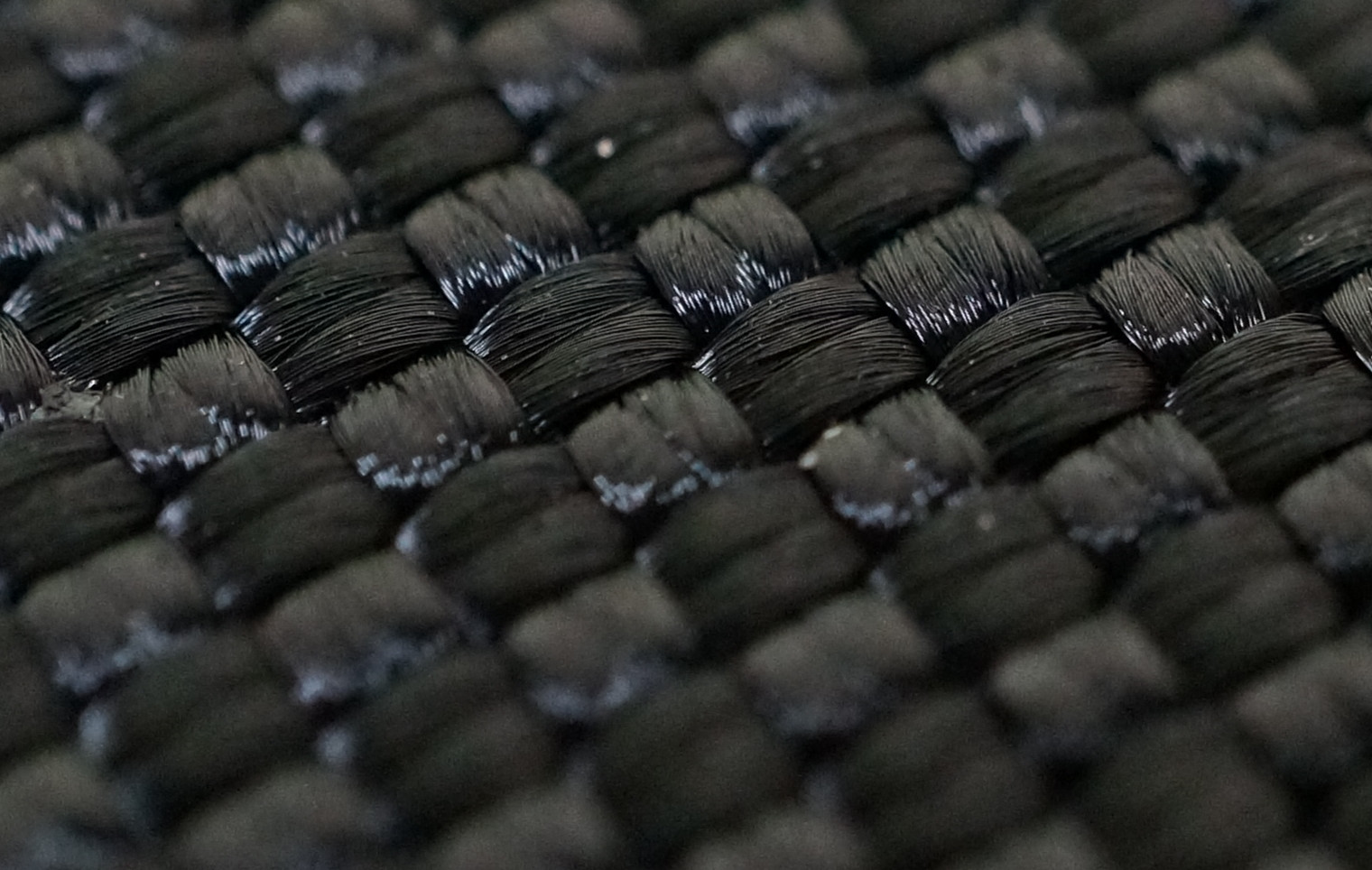
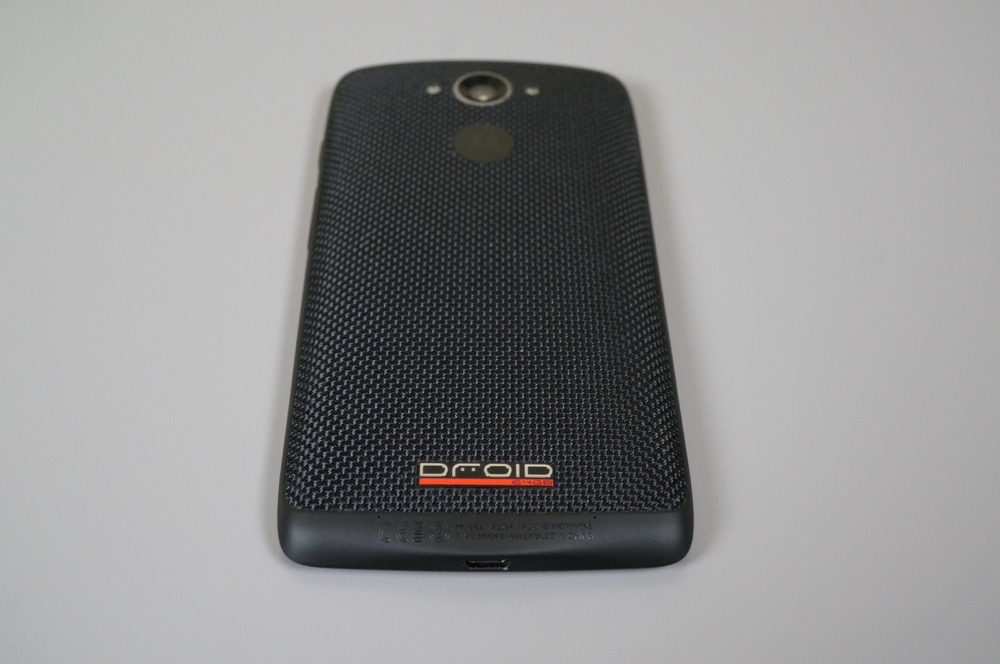
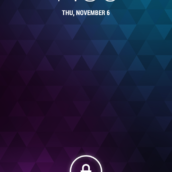
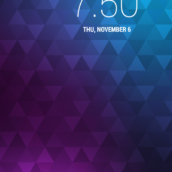
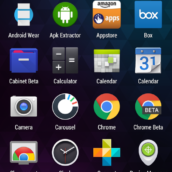
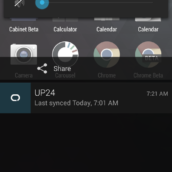
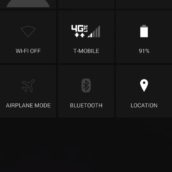
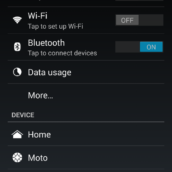
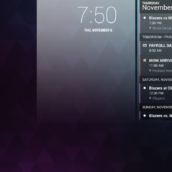
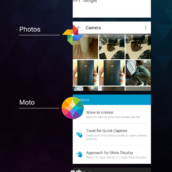


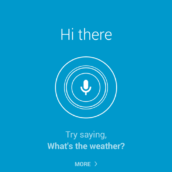
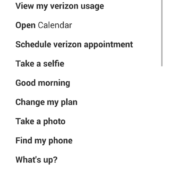
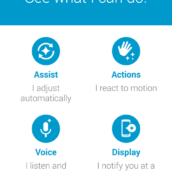
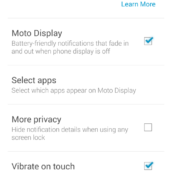
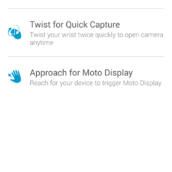

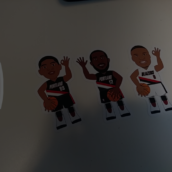

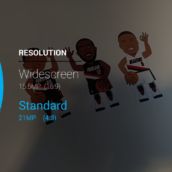
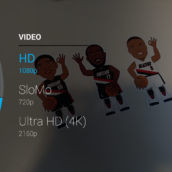


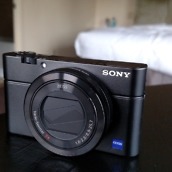




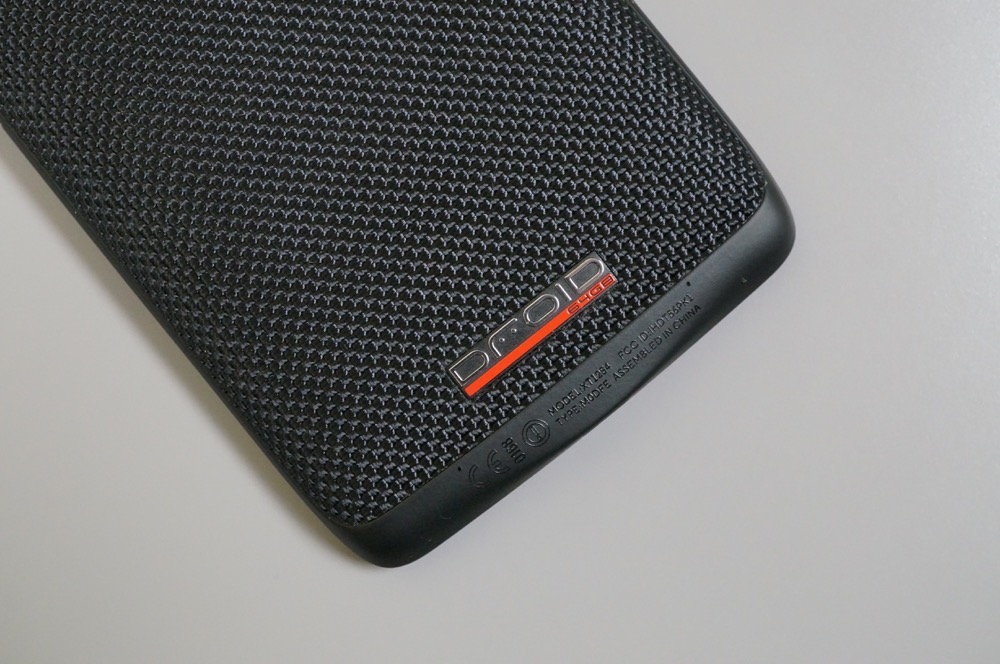

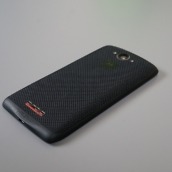
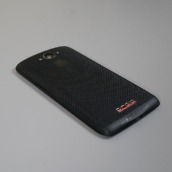
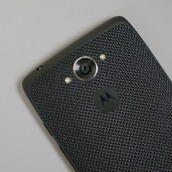
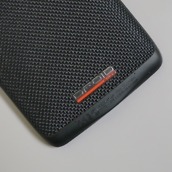

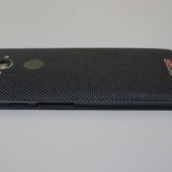
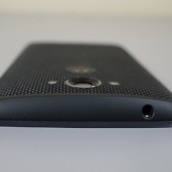
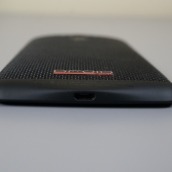
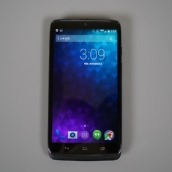
Collapse Show Comments362 Comments